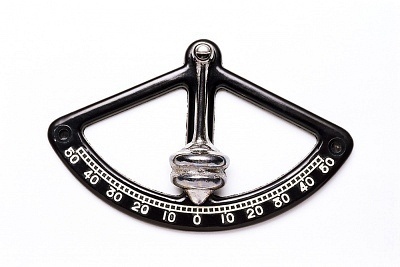Inclinometer
An inclinometer is a device that measures both positive and negative slopes. Inclinometers are also known as tilt meters, tilt indicators, gradiometers, declinometers, clinometers, etc. They measure tilt, levelness, and angles. Most inclinometers are based on conversion formulas that allow an angle to be calculated across a specific distance. While early inclinometers were based on fluids, most modern inclinometers use digital sensors.
How Inclinometers Work
Early inclinometers used a device that had a flat base and an interior container of water or other fluid. Because the container was marked to show specific angles, the liquid’s surface could indicate the tilt of the device. When the liquid’s surface met the 0 (zero) degree line, the inclinometer was parallel with the ground. When the liquid’s surface met the 90 degree line, the inclinometer was perpendicular to the ground.
Applications
Inclinometers are used in a wide variety of applications. For example, inclinometers are used in aircraft to determine the plane’s angular position in the sky. This is critical in flight as the pilot must know how level the plane is in order to fly up, down, sideways, and to land. Inclinometers are also used in some compasses and allow the user to determine how steep the ground beneath them is. They align antennas with satellites, alert users to equipment that may fall over, measure ground levelness for surveying purposes, and automatically keep the user balanced in Segways. Inclinometers are also used in construction to ensure that two/more nails are level with each other or that a door frame is even. Additionally, inclinometers are used in seismology to measure hills and valleys in order to determine if the ground is moving and, if so, at what rate.
Advantages
Inclinometers are advantageous because they allow users to determine their angular position with respect to the Earth. They can be either small or large and are often designed to display a digital read-out, although mechanical versions are available.


Comments - One Response to “Inclinometer”
Sorry but comments are closed at this time.